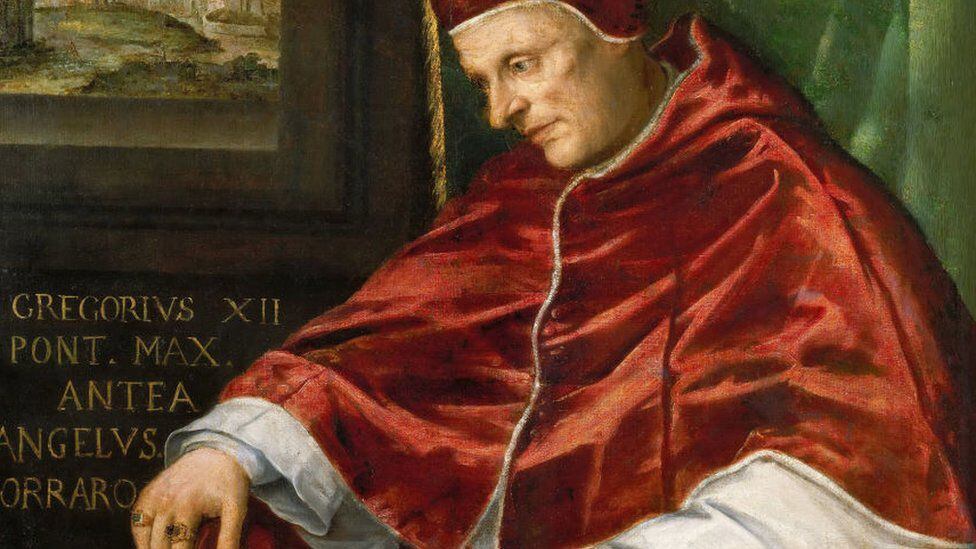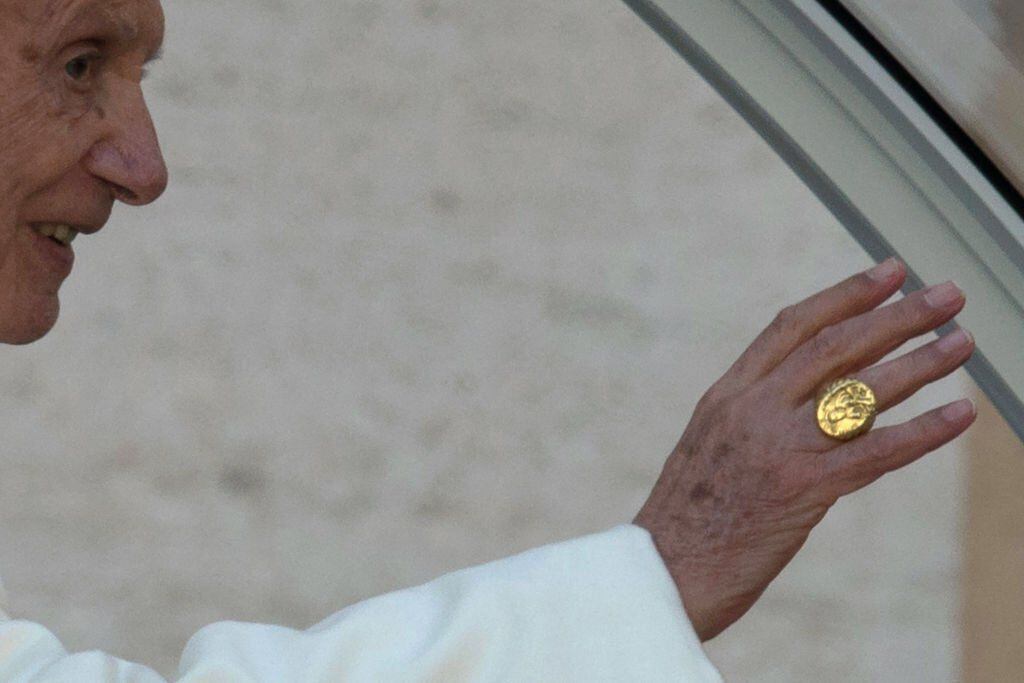This Thursday, in the Basilica of Saint Peter in Rome, an unprecedented event will occur in the long history of the Catholic Church: a Pope will be in charge of directing the funeral of another Pope.
Francisco, the current leader of Catholicism, will preside over the funeral services of the emeritus pope Benedict XVIwho passed away at the age of 95 last Saturday.
SIGHT: Benedict XVI died at the age of 95, the Pope who shook the world with his resignation
Benedict XVI, who was born in Germany and whose secular name was Joseph Ratzinger, was elected Pope in May 2005 to succeed the renowned John Paul II. However, in February 2013, he resigned from the position. Something that had not happened since the fifteenth century.
For this reason, both the wake of the pope emeritus and his burial this Thursday are unprecedented.
“It will be a solemn but sober funeral, because Benedict XVI requested it in his will,” said Vatican spokesman Matteo Bruni.
He also announced that Benedict’s body, which has been in a burning chamber since Monday, will be buried in a special crypt under the church of San Pedro.
Several specialists have pointed out that the funeral protocols for the emeritus pope have been very similar to those used for emeritus bishops, This is a figure widely used by the Catholic Church.
In fact, even Cardinal Gerhard Müller, who was prefect of the Congregation for the Doctrine of the Faith until 2017, explained it in an interview with the Italian newspaper “Correre della Sera”.
“We do not have two popes, there is only one, Francisco. He calls himself pope emeritus out of courtesy, but in reality Benedict XVI is a bishop emeritus,” he said.
In his will, the pope emeritus asked to be buried where the body of John Paul II was before, after his death in 2005 and until 2011, when his remains were taken to the chapel of Saint Stephen, inside the basilica of Saint Peter.
At BBC Mundo we tell you three reasons why Benedict XVI’s funeral will be unprecedented.
1. It will be celebrated by a Pope
In general, the funerals of a recently deceased Pope are presided over by a figure called the “camerlengo”, who is in charge of leading the Catholic Church at times when there is no acting Supreme Pontiff.
The point is that this time, because Benedict XVI resigned in February 2013, almost ten years before his death, there is indeed a functioning Pope: Francis.
And he will be the one in charge for the first time in historyof officiating the funeral of another Pope.
And it is that in Vatican history there was only one Pope voluntarily resigned to the throne of Saint Peter in the same way that Benedict XVI did.
It happened in the fourteenth century, when Pietro Angeleri di Murronea priest known for his hermit practices, was elected pope in an unusual decision even for the time, since Murrone was not a cardinal.
Thus he became Celestine VI. However, he soon saw that he could not rule and after almost six months, after signing a papal decree, he renounced his functions and returned to his life as a hermit.

However, his death occurred in a very different way from that of Benedict XVI: Boniface VIII, his successor, fearful of the fame of holiness that Celestine VI already carried during his lifetime and given the possibility that this would lead to a schism within the Church, ordered him arrested.
Celestino VI died inside a tower after ten months of confinement and he was canonized nearly a century later.
Of course, there was no state funeral, nor did Bonifacio VIII celebrate his obsequies, as will happen when Francisco presides over the mass in honor of his predecessor.
The other resignations of Popes recorded in history did not occur voluntarily or were the result of infighting.
In fact, the last formal resignation dates from the year 1415, when Gregory XII, in the midst of the so-called Western schism, resigned from the papacy due to political pressure and only when he died, in 1417, was his successor, Pope Martin V, elected.
2. There will be no election of a Pope
One of the main events after the death of a Pope is the election of a successor, which must occur in the shortest possible time.
In the early years of Christianity, Peter’s successors were even chosen from among the apostles themselves and the founders of the churches as Christianization progressed.
But little by little, the practice of the conclave (from the Latin cum clavis, which in Spanish means “under key”) began to prevail, in which the cardinals lock themselves in a place to name a new Pope.
This practice has varied greatly through the centuries (some conclaves lasted for years), but the standard protocol is that the cardinals meet in the famous Sistine Chapel of the Vatican and there, during several sessions, they are in charge of electing a new Pope.

When the necessary majority is reached after an election, a substance is burned that generates white smoke (in the so-called white smoke) that gives the news to the world that there is a new Pontiff.
This time that procedure will not be carried out, because it was already completed once the resignation of Benedict XVI was executed in 2013 and led to the election of Jorge Bergoglio as the new bishop of Rome.
The truth is that the departure of Benedict XVI, as various specialists have pointed out, it set the path for possible resignations of Popes in the future.
For example, Francisco himself admitted that he had signed a resignation letter in 2013 if his health did not allow him to fulfill his duties.
“I have already signed my resignation. The Secretary of State at the time was Tarcisio Bertone. I signed it and said: ‘If you were disabled for medical reasons or whatever, here is my resignation,’ “Francisco revealed to the American television network ABC.
3. The Destruction of the Fisherman’s Ring
After being elected, a Pope is distinguished from other clerics by three aspects of his clothing: the white cassock, the splint or papal staff, and the so-called fisherman’s ring.

The white cassock has been worn by all recent Popes, while the papal ferule is not exclusive to a pontiff – for example, Francis sometimes uses the same one used by Paul VI and John Paul II.
However, the fisherman’s ring is designed exclusively for each Pope, once he is chosen.
And when the death of the Supreme Pontiff is confirmed -in a ritual in which he is called three times by name, although the Vatican has not confirmed whether it was done with Benedict XVI-, various protocols are followed, among which is to destroy with a hammer the ring of the fisherman.
Well, this time, with the death of Benedict XVI, this protocol was not given, because the fisherman’s ring that had been given to him in 2005 was “annulled” at the time his resignation became effective, on February 28, 2013. .
Traditionally this object was destroyed after the death of the Supreme Pontiff, but in the case of Benedict XVI’s ring, they proceeded to mark it with a cross, as the then spokesman Federico Lombardi pointed out.
However, once he resigned, Benedict XVI was allowed to wear a simple white cassock – different from the one Francis wears – to indicate his status as pope emeritus, which Ratzinger wore until his death.
Source: Elcomercio
I am Jack Morton and I work in 24 News Recorder. I mostly cover world news and I have also authored 24 news recorder. I find this work highly interesting and it allows me to keep up with current events happening around the world.

:quality(75)/cloudfront-us-east-1.images.arcpublishing.com/elcomercio/VHSSL6IABREZ5A3LABK7VO7YNM.jpg)

:quality(75)/cloudfront-us-east-1.images.arcpublishing.com/elcomercio/4UPJ7IRCFJBTHBFZWNQOHACRVE.jpg)


:quality(75)/cloudfront-us-east-1.images.arcpublishing.com/elcomercio/AYPHYGNDCVAIVCMISJCVBF3X6I.jpg)
